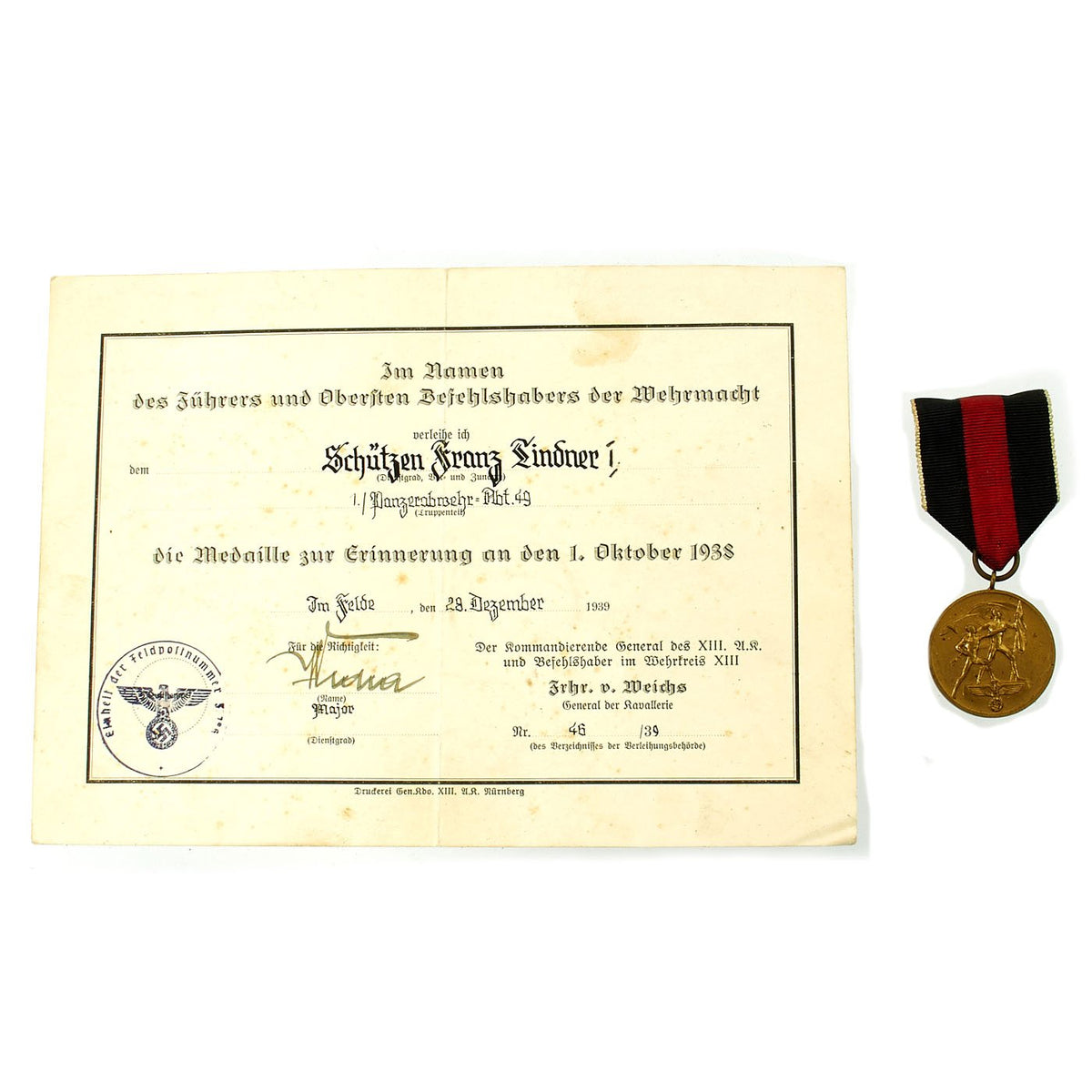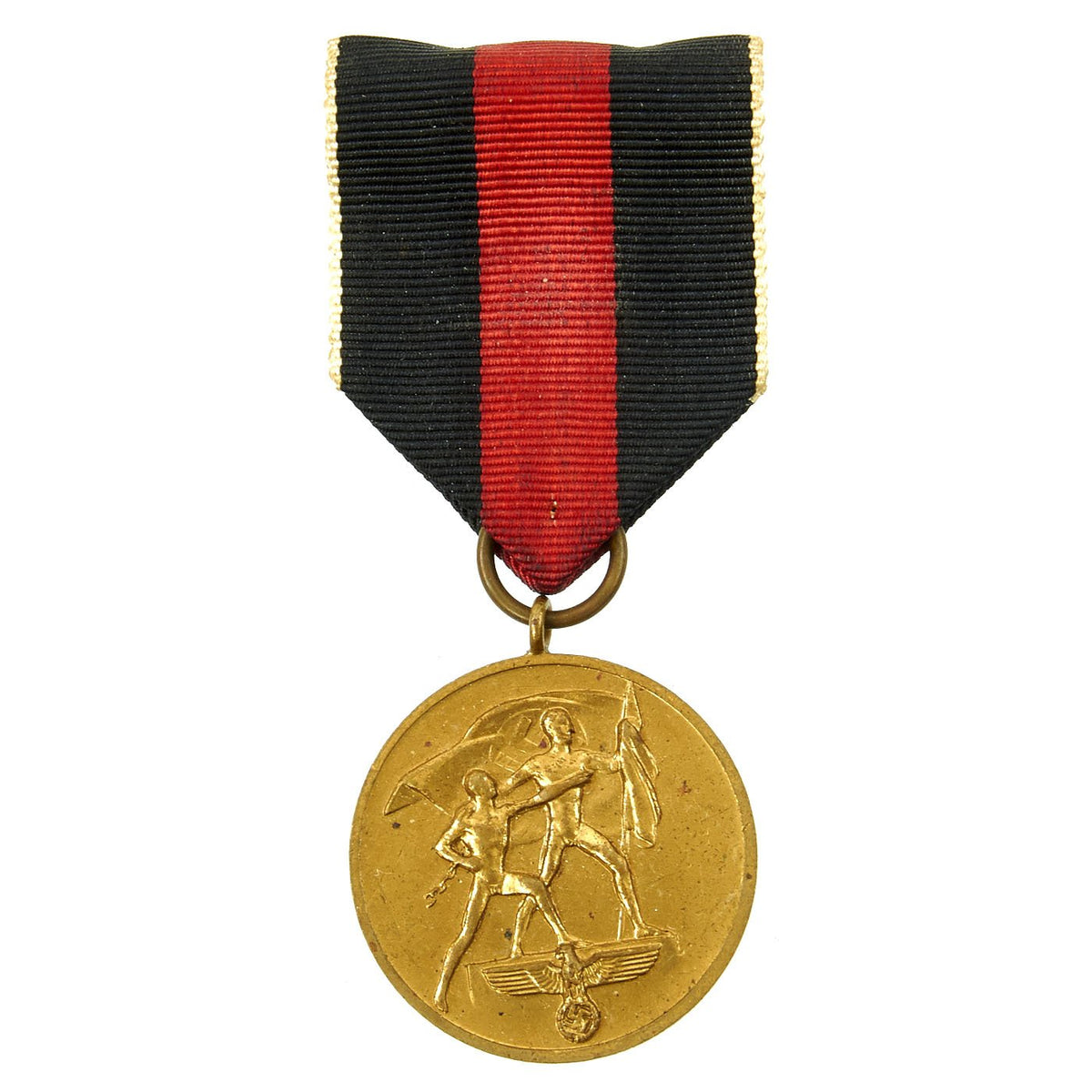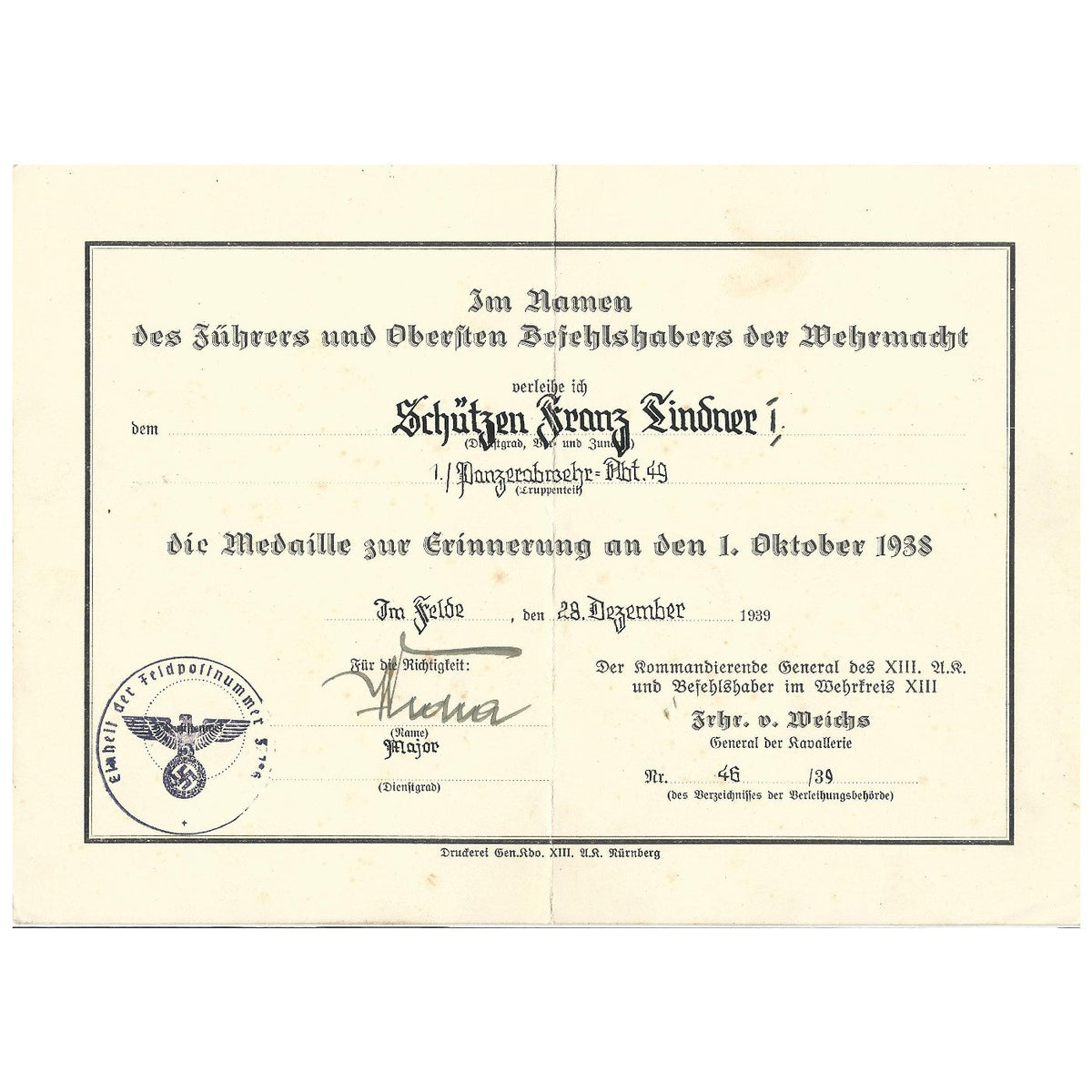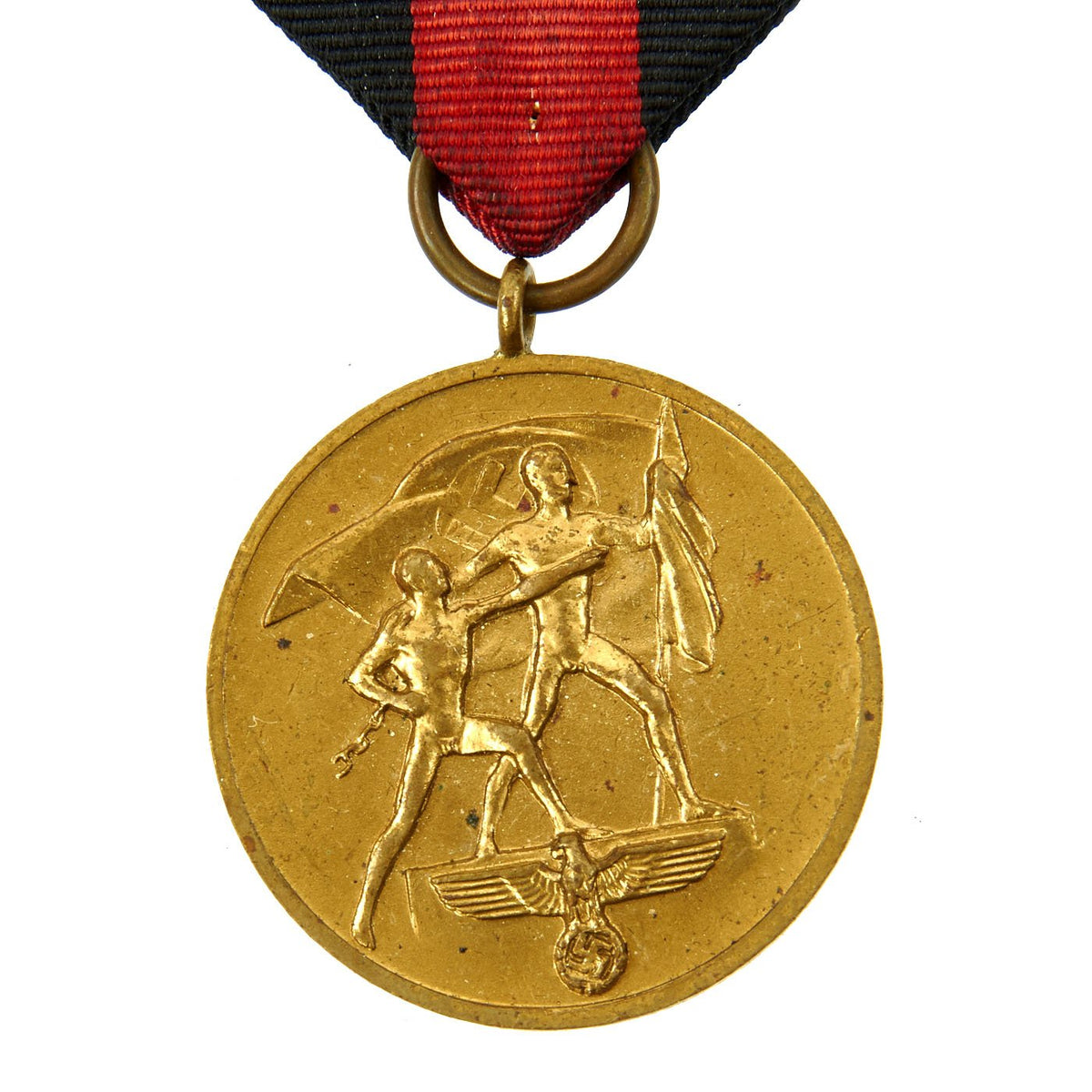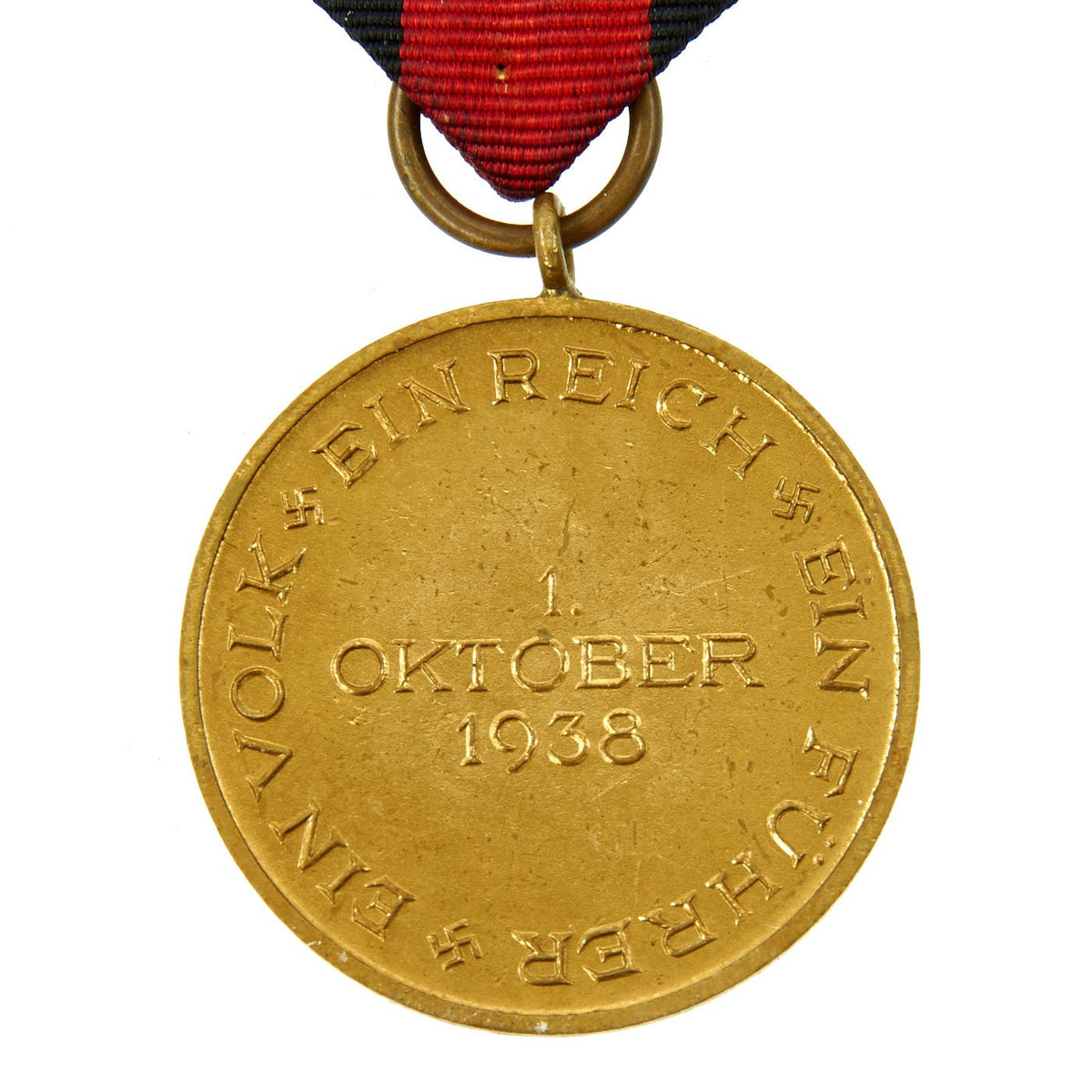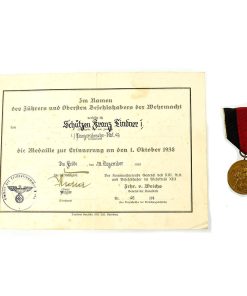Original German WWII 1 October 1938 Commemorative Sudetenland Medal with Named Award Document Original Items
$ 225,00 $ 90,00
Original Item: One-of-a-kind. This is a very nice German Pre-WWII 1 October 1938 Commemorative Medal (German: Die Medaille zur Erinnerung an den 1. Oktober 1938), commonly known as the Sudetenland Medal or Czech Conquest Medal. This was a decoration of NSDAP Germany awarded in the interwar period, and this fine example comes complete with its ribbon and original award document.
The document is written in German Black Letter type, and names the recipient as Schützen Franz Lindner of I. Panzerabwehr – Abt. 49. Schützen is one of the lower enlisted ranks, translating to “Rifleman”, and this soldier was part of the 1st Anti-Tank division, 49th Battalion. They were awarded this medal in the field on 28. December 1939. There is also a note written on the back of the document, which were unfortunately unable to translate.
A wonderful medal set, ready to research and display!
Instituted on 18 October 1938, the medal was awarded to German military personnel who participated in the occupation of Sudetenland and the occupation of Czechoslovakia in March 1939.
The medal was awarded to all German (and as well Sudeten) State officials and members of the German Wehrmacht and SS who marched into Sudetenland. Later it was awarded to military personnel participating in the occupation of the remnants of Czechoslovakia on 15 March 1939. It was awarded until 31 December 1940. In all 1,162,617 medals and 134,563 bars were awarded.
The medal was similar in appearance as the Anschluss Medal, the reverse only differed in the date. It was designed by Professor Richard Klein.
It is round and of the obverse there is a man standing of a podium with the Third Reich coat of arms and holding the NSDAP flag, he holding the hand and helping him get on the podium of another man who had a broken shackle on his right hand, this symbolize the joining to the Reich of Austria. On the reverse side is the inscription “1. Oktober 1938” (1 October 1938). The date is surrounded with the words “Ein Volk, Ein Reich, Ein Führer” (One People, One Empire, One Leader).
The medal was dye-struck and high in detail, with a bronze finish. The medal was suspended from a black ribbon with a red stripe in the middle, these being the colors of the Sudetenland.
Fast Shipping with Professional Packaging
Thanks to our longstanding association with UPS FedEx DHL, and other major international carriers, we are able to provide a range of shipping options. Our warehouse staff is expertly trained and will wrap your products according to our exact and precise specifications. Prior to shipping, your goods will be thoroughly examined and securely secured. We ship to thousands clients each day across multiple countries. This shows how we're dedicated to be the largest retailer on the internet. Warehouses and distribution centres can be located throughout Europe as well as the USA.
Note: Orders with more than one item will be assigned a processing date depending on the item.
Before shipping before shipping, we'll conduct a thorough inspection of the items you have ordered. Today, the majority of orders will be delivered within 48 hours. The delivery time will be between 3-7 days.
Returns
The stock is dynamic and we cannot completely manage it because multiple stakeholders are involved, including our factory and warehouse. So the actual stock may alter at any time. It's possible that you may not receive your order once the order has been made.
Our policy is valid for a period of 30 days. If you don't receive the product within 30 days, we are not able to issue a refund or an exchange.
You can only return an item if it is unused and in the same state as the day you received it. You must have the item in its original packaging.
Related products
Uncategorized
Angolan Rebel 1970s era 60mm Inert Display Mortar from Angolan Civil War Original Items
Uncategorized
Uncategorized
Uncategorized
Uncategorized
Uncategorized
Uncategorized
Uncategorized
Uncategorized
Uncategorized
Uncategorized
Uncategorized
Uncategorized
Australian WWII Owen MK1 Machine Carbine SMG Custom Fabricated Replica with Sling Original Items
Uncategorized
Uncategorized
Uncategorized
Uncategorized
